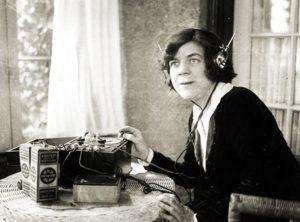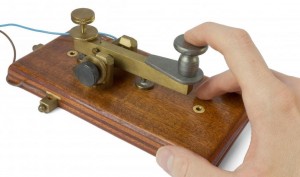
Judge’s Shocking Ruling on Hidden Audio Surveillance
The NCAVF article titled “FBI Plants Audio Surveillance Outside Courthouse“ was originally posted on 05/12/2016. This is an update to that article based on current events and the judge’s ruling on evidence and the use of audio surveillance devices in the case. Please click the above link to read the original article.
US v. Joseph J. Giraudo, et al.
After hearing arguments from both sides, U.S. District Judge Charles Breyer found that federal investigators had “utterly failed to justify” their warrantless use of recording devices. In his 19 page decision, Judge Breyer wrote, “Even putting aside the sensitive nature of the location here, defendants have established that they believed their conversations were private and that they took reasonable steps to thwart eavesdroppers.”
The judge’s decision could set a significant precedent in regards to the use of hidden audio surveillance devices. According to Judge Breyer, even though a conversation is being held in public, where bystanders not party to the conversation may hear, none the less, the conversation is (at least in this case) considered private. Therefore, in order for these recordings to be used as evidence in this case, the FBI should have obtained a warrant.
At almost the same time Breyer was hearing arguments on the San Mateo case, U.S. District Chief Judge Phyllis Hamilton heard an almost identical case involving audio recordings that were also secretly recorded by the FBI, also without warrants, also right outside courthouses, and also involving real estate investors whom the FBI believed were bid rigging. This case originated just across the bay, in Alameda and Contra Costa counties, but Judge Hamilton ruled completely differently that Judge Breyer.
US v. Michael Marr, et al.
In her case, Judge Hamilton ruled that the audio evidence would be admissible. In her decision, Hamilton stated, “Having listened to the recordings at issue, the court finds that defendants did not take steps to protect the privacy of the conversations that were audibly recorded.”
Just like in Breyer’s case, attorneys for the defendants (in Hamilton’s case) argued that despite being outdoors, clients frequently have private conversations with their attorneys. Judge Hamilton, however, dismissed this argument, stating, “It has been the court’s observation that conversations near the courthouse entrance are frequently overheard by unintended and unseen listeners, even from inside the courthouse.” Hamilton, therefore ruled there was no expectation of privacy.
Have Your Cake and Hide it Too
Despite siding with the prosecution in ruling the audio recordings admissible, Judge Hamilton, none the less, also indicated, “it is at the very least unsettling that the government would plant listening devices on the courthouse steps.” hamilton’s statements are concerning. On the one hand, Hamilton says the recordings are fine, but on the other hand she admonishes the FBI agents for planting audio surveillance devices outside a courthouse.
In her decision, Judge Hamilton pointed out that part of the reason she ruled in favor of the prosecution is because the defendants , “…did not take steps to protect conversations.” Even in public, most people assume that a conversation between two people is considered private. That a nearby bystander is listening is irrelevant because that bystander is not a party to the conversation. The judge, however, seems to feel different, as her ruling reflected.

Same But Not Equal
There is a very stark and dramatic difference of opinion in these almost two identical cases: Judge Breyer ruled the evidence out by saying the conversations were clearly private; Judge Hamilton ruled the recordings in by saying the conversation were clearly not private. Yet in both cases, microphones were hidden in public areas just outside courthouses. This difference of opinion between two federal judges touches on an interesting idea: are wiretapping laws outdated? A wiretap may be defined as, “ the monitoring of telephone and Internet conversations by a third party, often by covert means.” This would include setting up a hidden audio surveillance device such as a microphone outside a courthouse. The word “wiretap” comes from the 1890’s when the actual phone’s wire was “tapped” by plugging into it so it could be listed to or recorded by the third party. This language shows just how outdated these laws may be since so much of today’s “wiretapping” is done wirelessly.
Need for New Laws Regarding Audio Surveillance
Both of these cases, however, seem to address a subject that affects everyone (not just these defendants). Recently, the government has been placing microphones and recording conversations on city buses, trains, and other locations, seemingly without the consent of riders. Activities like this would appear to be a clear violation of our 4th Amendment rights. So what may be the future of wiretapping laws? When the authors of these wiretapping laws first created them, they did not foresee today’s smartphones, button cameras, and microscopic digital recorders. Is it time to reconsider what constitutes wiretapping in the 21st century?